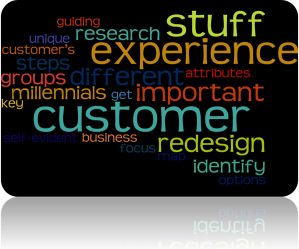 Millennials. I’ve been in so many meetings lately where they were the main topic of discussion. Why? Because they’re different. How they communicate, how they socialize with each other, why and how they move toward a brand and what could pull them away is different from other generations.
Millennials. I’ve been in so many meetings lately where they were the main topic of discussion. Why? Because they’re different. How they communicate, how they socialize with each other, why and how they move toward a brand and what could pull them away is different from other generations.
But couldn’t we say that about most of the customer groups out there? Aren’t first-time customers different than those that have been with you for ten years? Aren’t those that transact business with you purely via the web different than those that will only come into the store to make a purchase or get service?
The uniqueness of Millennials is important to note, but it’s important to note because every customer group (every customer) is unique.
To improve the customer’s experience, conduct this exercise with whomever the key 3-5 customer groups are for your business:
- Research – Conduct research – surveys, focus groups, interviews, etc. – to identify what is most important to them about their experience. Is it speed, simplicity, self-service options, self-evident steps, text-based options, face-to-face dialogue, quality, or kindness? Identify just a few key attributes of their experience.
- Journey Map – Use those attributes as guiding principles to redesign your customer’s experience by breaking up the experience into several Macro-process steps; here are six sample steps:
- They identify a need for and inquire about “stuff”
- They find stuff
- They request/order stuff
- They get a status on stuff delivery
- They receive stuff
- They complete/pay for stuff
- Redesign – During evaluation of each step in this customer continuum, how well does the experience in this step address the guiding principles? For example, when they’re requesting/ordering an item, is it “simple, quick, and self-evident?” If not, then that’s where there’s opportunity for a redesign.
The lesson on the laser focus on Millennials is to look at each customer or customer group as unique. Know what’s important to them so you can design your world around theirs. Research. Journey Map. Redesign
Did you like this post? Here are other related posts:























